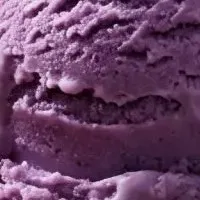
Retail Market Set to Thrive with New Shopping Trends for Spring Festival 2025
Retail Market Set to Thrive with New Shopping Trends
As the Spring Festival approaches on January 29, 2025, various new shopping patterns are emerging, poised to invigorate China's retail market. Terms like 'goods economy,' ice and snow tourism festivals, and 'wellness tea' are among the notable trends gaining attention.
Analysts highlight that the continuous evolution of consumption models is not just a sign of changing consumer behavior but also a significant contributor to economic growth. With younger generations increasingly embracing cultural heritage, wearing traditional Hanfu, or Chinese attire, is becoming a trend during the New Year celebrations. A regional manager for a French footwear brand in Xi'an, Bin Yanping, emphasizes the nationalism embedded in opting for traditionally styled clothing, stating that it reflects both confidence and pride in Chinese culture.
The Spring Festival is especially significant this year as it marks the first celebration after traditional Chinese dress received UNESCO Intangible Cultural Heritage status. Many are choosing to celebrate by embracing this rich cultural heritage with traditional attire and feasting, further fueled by an increase in tourism to culturally rich areas like Quanzhou, Chaozhou, and Datong.
Interestingly, 2025 is also expected to be a peak year for solar activity, making aurora viewing in previously less popular destinations a major attraction. Bookings to places like Mohe in Heilongjiang Province and Altay in Xinjiang have reportedly surged, showcasing a 17% and 67% increase respectively.
With the technological revolution continuing to sweep through industries, new consumer behaviors are evolving with a focus on immersive experiences, digital consumption, and personalized offerings. Zhang Yi, CEO of iiMedia Research Institute, noted that choice-driven consumption is increasingly influential among young shoppers. They prioritize product design, cultural elements, and collaborations as key aspects of their purchasing decisions.
As shopping venues and tourist spots adapt to these emerging trends, innovative experiences are debuting. One particular example is a creatively themed train traveling from Harbin to Yabuli, which offers diverse cultural settings within the train decor and free outfits for photography opportunities.
Traditional sectors are also leveraging these new consumer preferences. A jewelry distributor has experienced substantial success in sales of its neo-Chinese-style jewelry, now representing more than 60% of total sales despite higher price points. They note that this trendy style continues to attract a young demographic drawn to contemporary designs with cultural significance.
Home consumption is still a pivotal engine for China's economic development and holds even greater potential. The Central Economic Work Conference highlighted the need for diverse consumption scenarios, increasing service consumption, and promoting cultural tourism.
Experts assert that the upcoming Chinese New Year serves as a prime opportunity to boost retail performance by creating varied shopping experiences during the long holiday season, thereby reactivating the market through fresh consumer engagement strategies. In anticipation of substantial shifts in consumer preferences, businesses are actively preparing for a festive shopping season that mirrors the evolving cultural landscape of modern China.
These insights reflect how a fusion of tradition and modern consumerism will play a crucial role during this festive period, with the promise of renewed interactions between brands and consumers.
Topics Consumer Products & Retail)










【About Using Articles】
You can freely use the title and article content by linking to the page where the article is posted.
※ Images cannot be used.
【About Links】
Links are free to use.